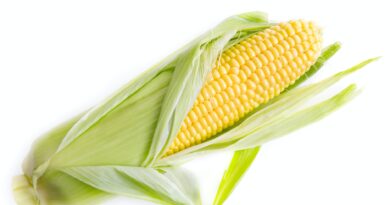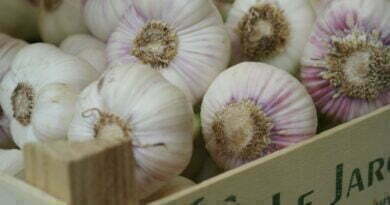How To Grow Cabbage. Health Benefits And Meal Ideas
Cabbage is a nutritious and versatile vegetable that can be grown on an allotment with relative ease. Cabbage plants are hardy and can be grown in a variety of climates, making them a great crop for allotment gardeners in different regions. With a little bit of planning and care, gardeners can enjoy a bountiful harvest of fresh, delicious cabbages that can be used in a range of dishes, from salads and coleslaws to soups and stews. In this article, we will explore the basics of growing cabbage on an allotment, including soil preparation, planting techniques, and care. We will also discuss the benefits of growing cabbage and how it can contribute to a healthy and sustainable lifestyle.
Growing cabbage
Growing cabbage on an allotment is a simple process that requires proper soil preparation, planting, and care. Here is a guide to growing cabbage on an allotment:
- Soil Preparation: Cabbage grows best in fertile, well-draining soil. Before planting, work in organic matter like compost or well-rotted manure to improve soil fertility and structure. Cabbage prefers a soil pH of 6.0 to 7.5, so test your soil and adjust if necessary.
- Planting: Cabbage can be started from seed indoors or directly sown outdoors. Start seeds indoors about 6-8 weeks before the last frost date in your area. Once seedlings are large enough, transplant them into the allotment, spacing them about 12-18 inches apart. Alternatively, sow seeds directly in the soil about ¼ to ½ inch deep, spacing them 12-18 inches apart. Plant cabbage in rows, leaving about 2-3 feet between rows.
- Care: Cabbage requires regular watering, especially during dry spells. Mulch around the plants to help retain moisture and control weeds. Cabbage is also susceptible to pests like cabbage worms and aphids, so monitor the plants regularly and treat with organic pest control methods like neem oil or insecticidal soap if necessary. Cabbage also benefits from regular fertilization, so apply a balanced fertilizer every 3-4 weeks during the growing season.
- Harvesting: Cabbage is ready to harvest when the heads are firm and feel solid to the touch. Cut the heads at the base of the plant using a sharp knife. Cabbage can be stored in a cool, dry place for several weeks, or it can be preserved by pickling, fermenting, or freezing.
Health Benefits
Cabbage is a nutritious vegetable that offers a range of health benefits. Here are some of the health benefits of cabbage:
- Rich in Nutrients: Cabbage is low in calories but high in nutrients like vitamin C, vitamin K, folate, and potassium.
- Promotes Digestive Health: Cabbage is a good source of fiber, which can promote digestive health and prevent constipation.
- Anti-Inflammatory: Cabbage contains compounds like anthocyanins and glucosinolates, which have anti-inflammatory properties and may help reduce inflammation in the body.
- May Help Lower Cholesterol: Some studies suggest that cabbage may help lower cholesterol levels, which can reduce the risk of heart disease.
- May Help Prevent Cancer: Cabbage contains compounds like sulforaphane and indole-3-carbinol, which have been shown to have anti-cancer properties and may help prevent certain types of cancer.
- Boosts Immunity: Vitamin C, which is abundant in cabbage, is important for immune system function and can help protect against infections and diseases.
- Promotes Bone Health: Cabbage is a good source of vitamin K, which is important for bone health and may help reduce the risk of osteoporosis.
Incorporating cabbage into your diet can offer a range of health benefits and contribute to a healthy and balanced lifestyle.

Meal Ideas
Cabbage is a versatile vegetable that can be used in a variety of dishes. Here are some meal ideas that incorporate cabbage:
- Coleslaw: A classic coleslaw is made with shredded cabbage, carrots, and a dressing of mayonnaise, vinegar, and sugar. It’s a perfect side dish for summer barbecues and picnics.
- Stir-fry: Cabbage works well in stir-fry dishes. Simply slice the cabbage into thin strips and stir-fry with other vegetables and protein like chicken, beef, or tofu.
- Soup: Cabbage is a great ingredient in soups and stews. Try making a classic cabbage soup with chicken broth, carrots, onions, and potatoes.
- Cabbage Rolls: Cabbage leaves can be stuffed with a variety of fillings like rice, ground meat, and vegetables. These can be steamed, baked, or boiled and served with tomato sauce or gravy.
- Kimchi: Kimchi is a traditional Korean dish made with fermented cabbage and spices. It’s a great way to add flavor and nutrition to your meals.
- Roasted Cabbage Wedges: Slice cabbage into thick wedges and roast with olive oil and garlic. Sprinkle with salt and pepper and serve as a side dish.
Growing cabbage on an allotment can be a rewarding and satisfying experience, offering gardeners a bountiful harvest of fresh and nutritious vegetables. With proper soil preparation, planting, and care, gardeners can enjoy delicious cabbage throughout the growing season. Cabbage is a versatile vegetable that can be used in a variety of dishes, from coleslaw and soups to stir-fry and kimchi. It is also packed with nutrients and offers a range of health benefits, including promoting digestive health, reducing inflammation, and boosting immunity. Overall, growing cabbage on an allotment is a great way to incorporate fresh and nutritious vegetables into your diet while enjoying the benefits of gardening.




